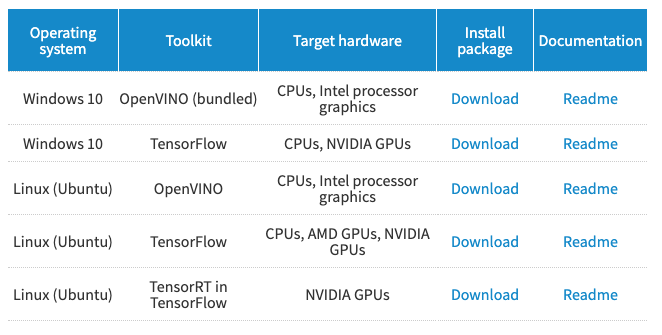It’s been a while since we last discussed the AIXPRT Community Preview 3 (CP3) release schedule, so we want to let everyone know where things stand. Testing for CP3 has taken longer than we predicted, but we believe we’re nearly ready for the release.
Testers can expect three significant changes in AIXPRT CP3. First, we updated support for the Ubuntu test packages. During the initial development phase of AIXPRT, Ubuntu version 16.04 LTS (Long Term Support) was the most current LTS version, but version 18.04 is now available.
Second, we have added TensorRT test packages for Windows and Ubuntu. Previously, AIXPRT testers could test only the TensorFlow variant of TensorRT. Now, they can use TensorRT to test systems with NVIDIA GPUs.
Third, we have added the Wide and Deep recommender system workload with the MXNet toolkit. Recommender systems are AI-based information-filtering tools that learn from end user input and behavior patterns and try to present them with optimized outputs that suit their needs and preferences. If you’ve used Netflix, YouTube, or Amazon accounts, you’ve encountered recommender systems that learn from your behavior.
Currently, the recommender system workload in AIXPRT CP3 is available for Ubuntu testing, but not for Windows. Recommender system inference workloads typically run on datacenter hardware, which tends to be Linux based. If enough community members are interested in running the MXNet/Wide and Deep test package on Windows, we can investigate what that would entail. If you’d like to see that option, please let us know.
As always, if you have any questions about the AIXPRT development process, feel free to ask!
Justin













